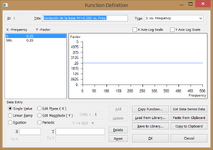Mech.ing.mg
Mechanical
- Dec 20, 2024
- 2
hello everybody. It’s my first time here, so I introduce myself. I’m Mat, Mech engineer, and I work as stress analyst. I’m used to employ SOL111 for random response analysis. PSD input -> SOL111 -> PSD output. Quite straightforward. When dealing with shock input, given SRS profile, I usually calculate an “associated” acceleration time profile (that has a SRS covering the given SRS) and then I perform a transient analysis (SOL112) to calculate stress output and assess structural integrity. I was wondering (and I’ll really be grateful for your help) if it could be possible to use the given SRS as input for a SOL111 to generate stress output. Is it legit? How Nastran understands that the input is not a PSD? And finally, how the calculated stress results should be considered to assess structural integrity?
Many thanks for your help
Mat
Many thanks for your help
Mat






